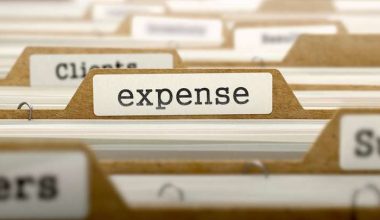The employer takes the time to train their staff in their new function through both established practice and a generous degree of patience. You guide your new employee into their role after the initial phase of staff development while wiping a proud tear from your cheek. They are now on their own, fully prepared to take on the new position. At the end of that, employee training is now complete. As your business grows naturally through regular operations, your new employee will remain with you throughout their career. They won’t require any additional instruction because they will learn and adapt on their own. However, to understand more about how staff development works, here is a post on its solutions, its national council, and lastly, its ideas.
What is a Staff Development?
Staff development is the process of enhancing an employee’s current competencies and skills while also creating new ones to serve the objectives of the firm. Employer and employee collaborate on skill-building during development. The previously specified initial training period is not included in this. Development of the staff happens after the training phase. It doesn’t instruct a worker on how to carry out their job. It involves teaching experienced employees how to perform their job more effectively or adjust to new ideas or practices.
This is not to argue that excellent workers won’t adjust to their jobs and pick up new knowledge and abilities through practical and demanding encounters. It follows that assuming an employee can learn everything without additional training can be harmful to the development of your team, which unintentionally slows down the growth of your business.
What Are the Advantages of Introducing Development?
Employee development is a fairly simple idea to grasp. By developing new skills that are relevant to the role, the individual becomes more effective at their job. Regrettably, implementing training can consume business resources and cost money from outside sources (especially if it is not necessary for the job, as in the case of the leadership skills example above). Finding the time to train personnel while taking them away from their regular activities could be challenging. Finding outside trainers to work with your team may be pricey.
#1. Your Staff Improves
Employee development improves your workforce… Do we really need to bring this up? It’s crucial to remember that there aren’t many drawbacks to the development itself. Cost or time may be drawbacks of additional training, but time waste is never a problem. 100% of the time, the development will make your staff better. Even while it might not be an exponential improvement, there will still be progress.
#2. Quickly Attract Top Talent
Candidates must feel the same way if the majority of employees cherish the opportunity to advance within their organizations. A+B=C is a straightforward formula. Employees want to work for organizations that support and provide the chance for growth as employees and as people, regardless of their employment position. As a result, providing your staff with growth chances is a useful strategy for luring in knowledgeable individuals. If a prospective employee is interested in working with you because you provide prospects for advancement, they undoubtedly value improvement and a strong work ethic. After all, those are the workers you need.
It’s a good start to mention that you offer growth in your job postings, but you must be able to go into further detail during the interview. Also, making it available to present workers will encourage word-of-mouth dissemination.
#3. Improved care and performance from employees
An engaged worker is a more effective worker. A caring employee is less likely to have an accident, is more outgoing, is more enthusiastic in a team environment, and is more likely to be retained. The attitude changes that occur around someone who cares about their duty and obligations can be seen without the help of a professional psychologist. At the end of the day, maintaining an equally engaged team of employees can be a challenging challenge. Workers may give you less the more you ask of them.
#4. Saving Money through Internal Promotion
As a staffing company, we frequently receive questions about finder high-up personnel. Managers, supervisors, elders, executives, and so on. Whether or not you use a staffing agency to find a leader, the screening and recruiting process still require a significant amount of time and resources. Thus, internal promotion can ultimately reduce the headache like a potent medication. This procedure can be made simpler and quicker by developing your current staff.
National Staff Development Council
Through staff development and school improvement, the National Staff Development Council, a non-profit professional organization, is dedicated to ensuring the success of all students. It was established in 1969, and its goal is to address the problems that all reform process participants face. Dr. Murphy first became interested in the brain and learning through this organization. She is currently incorporating Dr. David Sousa’s and Dr. Pat Wolfe’s research into her lessons.
Now the having knowledge about the national staff development council, the big question is, how do they help in developing staff standards in a national way?
#1. Developing Staff Development Standards Collaboratively
The role standards might play in furthering high-quality staff development in schools has been a topic of discussion among NSDC officials for some time. The national staff development council staff accepted the invitation after Mizell made some conditions. The NSDC board and staff desired that standards be created jointly with contributors from a sizable number of professional organizations. The practitioners benefited from smart writing and a unanimous call for reform by gathering association representatives to create the standards. The standards of the national staff development council have undergone two changes.
#2. Evaluating the Quality of Professional Development
In order to help the expanding number of school districts and states implement the standards to raise the caliber and effectiveness of professional development, the national staff development council offers tools and resources. In order to create an assessment tool that would gauge the effectiveness of a local school system’s professional development in accordance with the criteria, NSDC again contacted SEDL in 2001. Schools might utilize the instrument developed by SEDL with teachers to gauge how well staff development was perceived to be aligned with standards.
#3. Visualizing the Standards in Action
One resource educators value is the SAI. Others, however, persisted in requesting help in putting the guidelines into practice. Again working with SEDL, a group of educators created Innovation Configurations (ICs) for the standards under the direction of Shirley Hord and consultant Patricia Roy.
The implementation of new programs by instructors frequently deviates from the objectives and targets of policymakers, program designers, or professional staff developers, according to studies of policies, practices, and programs. For instance, even though a trainer may describe and even demonstrate a new reading technique when teachers return to their classrooms, actual instruction may differ greatly from the model. Also, when they return to the classroom, teachers modify their lessons in ways that can differ throughout an entire school or system. These modifications may affect how a district or school performs in comparison to expectations based on program outcomes in other institutions. IC maps are used by district and school leaders, program creators, and professional staff developers to promote implementation that more closely resembles their expectations for practice.
Staff Development Solutions
Staff development solutions practices should be carefully considered, as they have been shown to be among the most advantageous investments a business can make in its human capital. Employees should be inspired to accept and quickly adapt in the context of a constantly changing market environment. The only solutions to that issue are to offer staff support by involving them in various training and development programs to take advantage of their abilities and knowledge. A targeted and thorough training and development program aids organizations in demonstrating their dedication to the development and improvement of their staff, which in turn promotes increased productivity and more effective and efficient performance.
Needs for Training & Development of a Staff
Below is the need for staff development solutions in training and developing them:
#1. Observing High-Potential Employees
Despite the significant benefits it offers the organization, strategic and successful staff development is not an easy process. As your business’s resources are limited, it’s essential to distribute money, time, and labor carefully. One such wise allocation is to find high-potential personnel on whom to concentrate training and development efforts.
#2. Needs for Training and Development Identification
With a better grasp of employee development’s imperatives, businesses have built their own programs for their workers, usually suited to the company’s strategies. Yet, many employers frequently confuse what their workers want with what they actually need, leading to staff development and training programs that are underwhelming, resource-intensive, and sometimes even unproductive. So, it is necessary to first establish what gaps your employees have from an organizational perspective in order to properly construct an employee development strategy.
#3. Measurement of Training Effectiveness
Without a doubt, an effort that is not properly measured is wasted. Since the success of your staff training and development programs contributes to the performance of your entire organization, accurate measurement using valid metrics enables ongoing monitoring and improvement. By asking your employees for their subjective feedback, you can measure the performance of your effort in a traditional approach. While this offers quick answers, it does not provide a neutral and consistent assessment of your development proposal.
Staff Development Ideas
To establish a culture of continual learning within your firm, employee development is essential. There are a number of strategies to engage and encourage employees in work and related activities when firms think about staff development ideas. Employers who are effective use leverage while realizing the importance of corporate expansion for long-term gains.
The following ideas for staff development serve as the standard for all businesses.
#1. Employee Coaching and Mentoring
The secret to assisting workers in developing and excelling at their jobs is mentorship. Maintaining a competitive edge over other businesses in their sector helps employees grow professionally and gives them the confidence to quickly adopt new business structures and models. This is one of the best ideas for staff development.
#2. Frequent and Ongoing Exercise
An efficient training program makes the company’s job more productive and profitable. Also, it lowers the program’s cost and aids in the development of soft skills in staff members, enhancing their interactions with coworkers and conduct.
#3. The Switch To Microlearning
An innovative approach to learning known as “microlearning” divides dense knowledge into manageable, bite-sized units. This will assist employees to diagnose difficulties, overcome obstacles, and increase their knowledge. Moreover, it saves time and money and boosts office productivity faster and more efficiently.
#4. Programs that Gamify Employee Training
Your learners will be motivated to participate in and finish their required training courses by the inclusion of gamification aspects in your learning materials. Only 20% of typical eLearning courses are completed. Gamification, on the other hand, increases engagement and moves people closer to completion by up to 90%.
#5. Set up a Book Club and Staff Forum
Workers can decide on a book, article, or topic and gather frequently for discussion in person or by videoconference. Employees can learn more about important talents and skills or share the newest thoughts and trends in their fields or jobs in an entertaining way.
#6. Organize Lunch and Learns
Many businesses have been successful in setting up an over-lunch instructional program for both office and remote workers. By bringing the staff back on-site in the post-pandemic era, the lunch-and-learns program evolved into a novel and exciting growth opportunity.
#7. Job Observation
Employees that follow another employee to watch and pick up knowledge are said to be “shadowing” them. The ability to align one’s actions with organizational strategy, conform to organizational needs, and develop a deeper grasp of other people’s jobs can all be easily learned by shadowing.
#8. Learning Opportunities from Others
Peer-to-peer learning is a method of instruction in which students instruct one another while fostering teamwork and collaboration at work. Employees can develop their knowledge-sharing, social-learning, leadership, and team-building abilities with this approach.
#9. Job Creation
Another sure possibility is job expansion, whereby giving employees more responsibility within their current roles might enable them to gain new knowledge and expertise. An employee who is eager and willing to take on new responsibilities should consider a suggestion. This gives them the sense that the business values and trusts them.
#10. Encourage Outside Training
Programs for external training are very important in helping people build their confidence. It is specifically made for workplace play and has advantages in changing the environment. It demonstrates efficiency in the use of technological tools and offers a distinctive method of instructive strategies. This is also one of the best ideas for staff development
#11. Reward Staff Appropriately
Employee morale is significantly increased by rewarding and acknowledging good work. Employees are inspired to put in extra effort in order to take on new challenges and improve their teamwork, which results in the greatest performances with efficiency and effectiveness. This serves as significant ideas in the staff development program and allows the organization and the employee to develop and learn together.
#12. Concentrate on Developing Leadership
The goal of leadership development is to prepare the existing workforce to serve as tomorrow’s leaders. It aids in the development of abilities necessary for assuring succession planning and successfully running the organization. Employees are taught leadership skills like decision-making, problem-solving, creative and innovative thinking, and project management to assist them to advance in their careers.
#13. Programs for Individualized Learning
This is one of the best ideas for staff development. Programs for personalized learning put an emphasis on each student’s unique aptitudes, competencies, strengths, and shortcomings. It provides training tailored to the needs of the workforce, assisting them in carrying out their jobs effectively. Each worker is different, and they all develop at different rates. Creating individualized development plans helps employees stay engaged in their learning process and increases their level of responsibility for their work.
What Are the Four 4 Approaches to Employee Development?
Four major categories—formal education, assessment, work experiences, and interpersonal relationships—comprise the many strategies for employee development.
What Are the Stages of Staff Development?
Attraction, recruitment, onboarding, development, retention, and separation are the six distinct stages at work.
What Are the Components of Staff Development?
Training, mentoring, helpful written material, as well as staff assessment, evaluation, and feedback, make up an efficient staff development system. Each must be consistent with the fundamental values and goals of the company.
What Are Effective Methods of Employee Development?
The most effective training techniques are coaching, stretch assignments, and mentoring. Stretch assignments are used to create future leaders while mentoring and coaching aid in the direct transfer of information and experience in the traditional teacher-student paradigm.
What Are the Four CS Which Are Key to Employees?
Dr. Talya Bauer from the SHRM Foundation claims that proactive attention to The Four C’s is essential for a successful onboarding process. This is an acronym for connection, culture, compliance, and clarification.
Related Posts
- Best 10 People Management Software In 2023: Free & Paid Options
- TRAINING PLAN: What Is It, Example & How to Create One
- PROFESSIONAL DEVELOPMENT: Things You Need to Know
- PRODUCT DEVELOPMENT STRATEGY: How to Create a Product Development Strategy
- LEADERSHIP DEVELOPMENT: Process, Strategies & Importance






